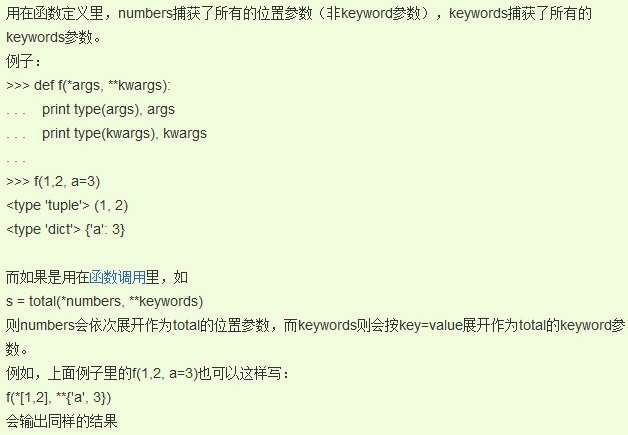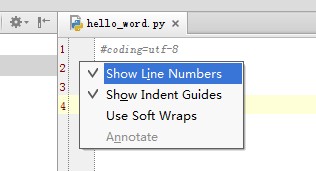python函数参数*args**kwargs用法实例
#coding=utf8
__author__ = 'Administrator'
# 当函数的参数不确定时,可以使用*args和**kwargs。*args没有key值,**kwargs有key值
def fun_var_args(farg, *args):
print 'args:', farg
for value in args:
print 'another arg:',value
# *args可以当作可容纳多个变量组成的list或tuple
fun_var_args(1, 'two', 3, None)
#args: 1
#another arg: two
#another arg: 3
#another arg: None
def fun_var_kwargs(farg, **kwargs):
print 'args:',farg
for key in kwargs:
print 'another keyword arg:%s:%s' % (key, kwargs[key])
# myarg1,myarg2和myarg3被视为key, 感觉**kwargs可以当作容纳多个key和value的dictionary
fun_var_kwargs(1, myarg1='two', myarg2=3, myarg3=None)
# 输出:
#args: 1
#another keyword arg:myarg1:two
#another keyword arg:myarg2:3
#another keyword arg:myarg3:None
def fun_args(arg1, arg2, arg3):
print 'arg1:', arg1
print 'arg2:', arg2
print 'arg3:', arg3
myargs = ['1', 'two', None] # 定义列表
fun_args(*myargs)
# 输出:
#arg1: 1
#arg2: two
#arg3: None
mykwargs = {'arg1': '1', 'arg2': 'two', 'arg3': None} # 定义字典类型
fun_args(**mykwargs)
# 输出:
#arg1: 1
#arg2: two
#arg3: None
# 两者都有
def fun_args_kwargs(*args, **kwargs):
print 'args:', args
print 'kwargs:', kwargs
args = [1, 2, 3, 4]
kwargs = {'name': 'BeginMan', 'age': 22}
fun_args_kwargs(args,kwargs)
# args: ([1, 2, 3, 4], {'age': 22, 'name': 'BeginMan'})
# kwargs: {}
fun_args_kwargs(1,2,3,a=100)
#args: (1, 2, 3)
#kwargs: {'a': 100}
fun_args_kwargs(*(1,2,3,4),**{'a':None})
#args: (1, 2, 3, 4)
#kwargs: {'a': None}
 |

